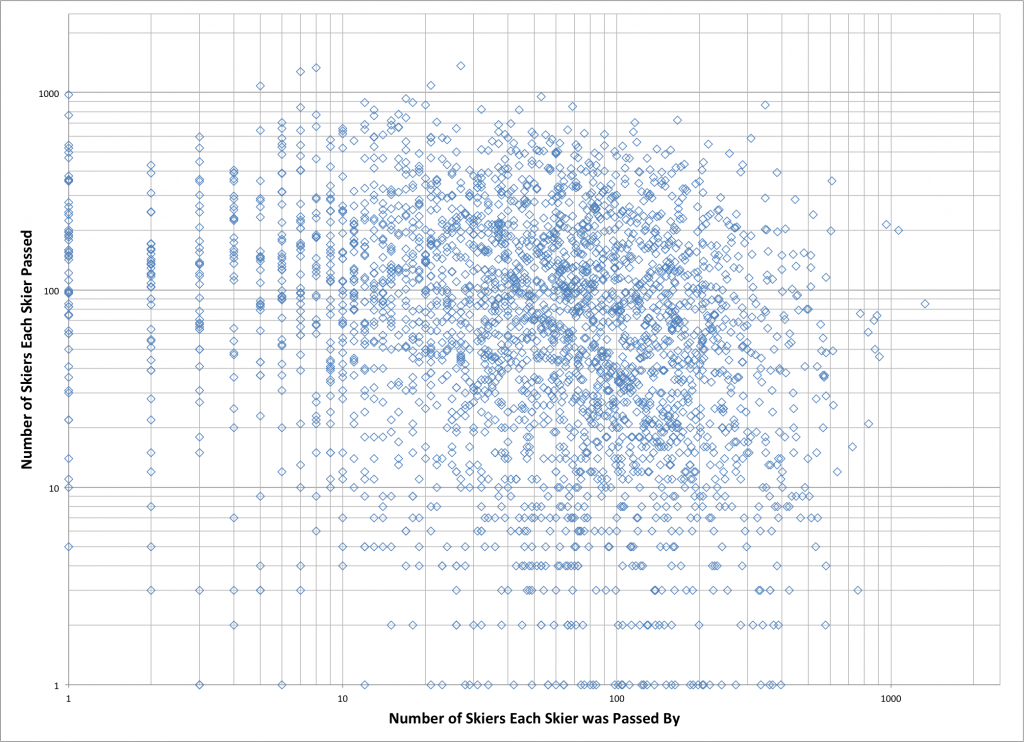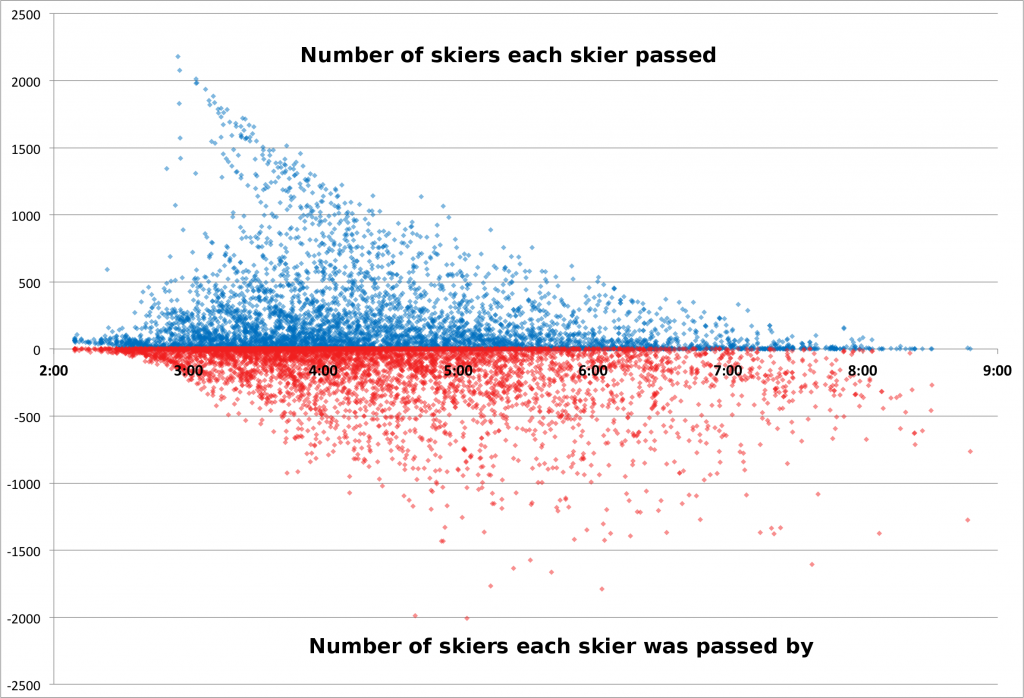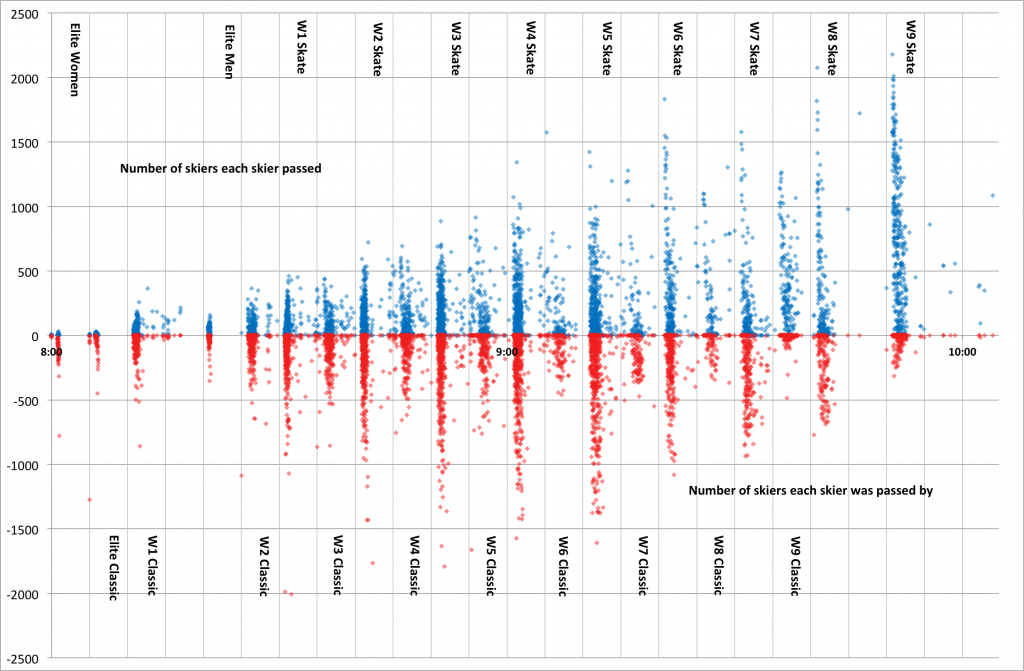When I say to people “hey, look, I have all these data, what do you want to know” invariable people come up with two things:
- How many people did I pass?
- How many people passed me?
Well, then. While we can’t go in to our data and figure out exactly how many times you went back and forth with that pesky bib 1229 (or 173, or 4338), we can take the data from each split and build a profile of each skier’s place during the race, and then add up all the passes. Is it perfect data? Certainly not. But it gives a very good idea of how many people a speedy ninth waver passes as they double pole up hills to finish in three hours.
A couple of notes:
- We are not talking about the number of people a skier passed in the results. We are looking at the physical location of a skier, and how many people they actually went by on the trail, regardless of wave or start time.
- This includes data for the number of Korteloppet skiers passed in the first 9 kilometers. While most of our data keep Birkie and Korte skiers separate, here we show how many yellow-bibbed skiers Birkie skiers passed, since if you’re in the 9th wave and you’re double poling up a hill, it is of little concern which color the bib on the 7th Waver next to you is wearing.
This first chart compares the number of skiers passed with the number of skiers each skier was passed by. Since it is a logarithmic chart, it does not show skiers who passed or were passed by zero skiers. There is a lot of spread, but most skiers passed or were passed by somewhere in the range of 100 skiers, and very few passed or were passed by more than 500. Still, there is dramatic variability and its noteworthy that there are some racers who both passed and were passed by several hundred skiers.
 Next, we can show, for each skier, how many skiers they passed and how many skiers they were passed by based on their racing speed. Each skier is shown by both a red and a blue dot based on their finishing time.
Next, we can show, for each skier, how many skiers they passed and how many skiers they were passed by based on their racing speed. Each skier is shown by both a red and a blue dot based on their finishing time.There are a few patterns to note. One is the diagonal striations of density which show first few waves, and then the long “tail” reaching up towards 2000 passes which is the 9th wave—which had a lot of people to pass. Note how the front of the pack—the Elite Wave—all had at least a few passes; this is by virtue of their speed meaning they passed a number of women in the Elite Wave. Nowhere else do we see this kind of gap.
Finally, we can plot these times out by start time and show each wave. The skiers who pass the most are mostly in the 9th wave, although there are significant concentrations starting in wave 4 (and more in waves 6 and 8 than 7). Then there’s the most passees, which are mostly in waves 3 through 5.


